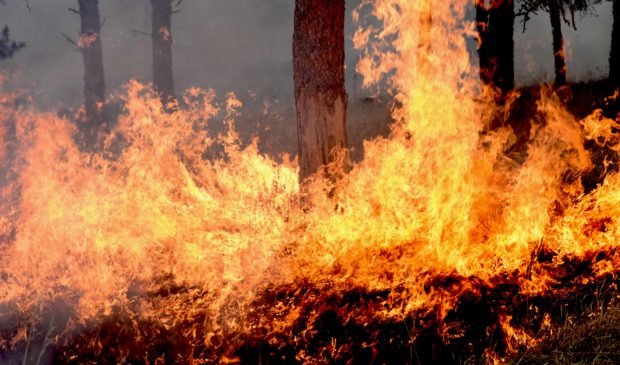Newsletter Signup
The Austin Monitor thanks its sponsors. Become one.
Most Popular Stories
- Austin opens new affordable housing development in Southeast Austin
- Landmark commission says goodbye to Nau’s Enfield Drug
- After a decline last year, Travis County homeowners should expect a return to rising property taxes
- Congress Avenue transformation plan gets support from Urban Transportation Commission
- Ethics complaints filed against Siegel, AURA
-
Discover News By District

Austin firefighters look to California to combat wildfire risk
Tuesday, February 11, 2020 by Jessi Devenyns
Outside of California, the Austin metro area is one of the regions in the country most vulnerable to wildfire. According to CoreLogic’s 2019 Wildfire Risk Report, the metropolitan area has the fifth-highest risk in the nation for a major wildfire incident. But that’s not news to city leaders or the Fire Department.
Since the Bastrop County Complex fire and the Steiner Ranch fire nearly a decade ago, the Austin City Council has discussed adopting a citywide wildland-urban interface (WUI) code. While that code remains in draft form, Austin firefighters are not waiting around. Shortly following the fire season of 2011, the Fire Department set up its Wildfire Division, which has recently been looking to its more experienced counterparts in California for advice on how to prepare the city for a megafire.
“There are a lot of lands in California that are very, very similar to those in Texas,” retired California firefighter Todd Derum told the Austin Monitor during a tour of the northwestern reaches of Austin. “Here in the Austin area, you suffer droughts, you have highly flammable vegetation that covers the rolling hills. (Wildland) also abuts up against the neighborhoods and in some cases, the neighborhoods are intermixed with the wildland fuels. Those right there, that’s a lot of California.”
District 10 Council Member Alison Alter agreed with the assessment. The Council member previously lived in California and said her experience coupled with climate change makes her “laser-focused on trying to help us to do what we can to try and mitigate the risk.” She explained that wildfire risk cannot be eliminated, but it can be reduced.
Council Member Jimmy Flannigan pointed out that it is not just the far-flung districts of West Austin that are at risk. “Almost every Council district has wildfire risk,” he said. And wildfire risk does not stop at the Austin city boundary. “No fire will abide by a jurisdictional line,” he said. “We also have to plan this solution regionally.”
Part of the solution, according to the California firefighters, is training all firefighters in wildland and wildland-urban interface firefighting techniques. Derum said all California firefighters are trained to fight both structure fires and fires in the wildland-urban interface. “It’s not a specific specialty,” he said of wildland fires. When a fire begins to spread, “It’s all hands on deck.”
Bob Nicks, president of the Austin Firefighters Association, explained to the Monitor that the Austin Fire Department is working on cross-training all of its staff in both firefighting techniques. “We’re doing it, but we need to be doing it more frequently,” he said. Right now, all firefighters in the department have taken a basic wildfire certification course. However, to increase firefighters’ exposure to training, next year the department will roll out an online and hands-on curriculum to train all levels of the department in fighting wildland-urban interface fires.
Fighting wildland fires differs from the wildland-urban interface. In populated wildland-urban zones, human safety becomes a major concern. In Austin, accounting for the safety of residents is of particular concern because 61 percent of the city’s homes and businesses are abutting the city’s wildlands.
To help defend those homes, City Council wants to approve a housing code requiring residents to fireproof their homes. Known as the WUI code, it regulates how densely an area can be built, what kind of materials can be used to construct homes and how vegetation around a structure is managed.
Council members Alter and Flannigan said on the tour that they expect Council to pass the WUI code.
In the meantime, Nicks said the risk must be addressed, starting now. “I think we need to be hitting it more aggressively,” he said. “It’s going to take 10 years before we start reducing risk.”
U.S. Air Force photo by Airman 1st Class Donald C. Knechtel.
The Austin Monitor’s work is made possible by donations from the community. Though our reporting covers donors from time to time, we are careful to keep business and editorial efforts separate while maintaining transparency. A complete list of donors is available here, and our code of ethics is explained here.
You're a community leader
And we’re honored you look to us for serious, in-depth news. You know a strong community needs local and dedicated watchdog reporting. We’re here for you and that won’t change. Now will you take the powerful next step and support our nonprofit news organization?








